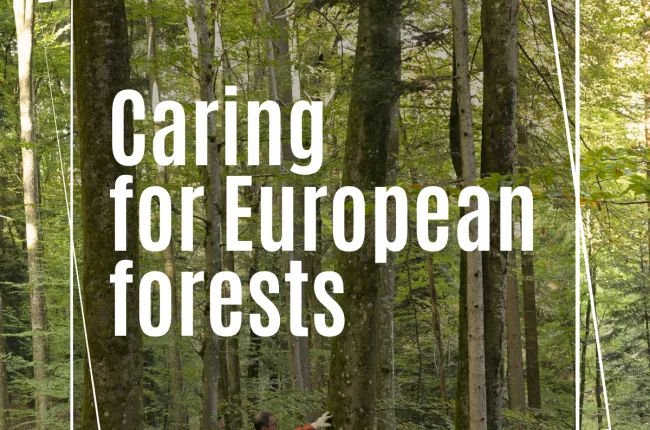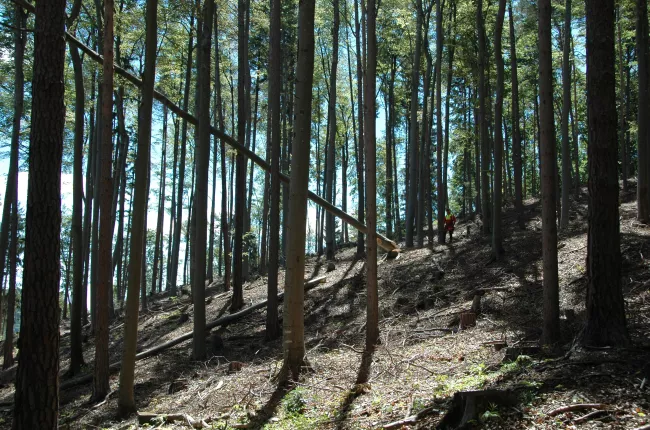CEPF Secretary General, Fanny-Pomme Langue, participated to the panel discussion “Strengthening Forest-Based Sector’s Contribution to Green Deal”. She started with pointing out that the discussions related to the Green Deal and forests often overlooks the people behind the forests and called for better inclusion of forest owners and managers in the implementation of the Green Deal. Then she continued with the question on strict protection of forests which in the forest owners’ views is not the best way to make forests healthier and more resilient. Strict protection would also create additional burden on the forest owners and hamper the delivery of other forest benefits to the society. As the third message she highlighted that in order to reach the 2050 carbon neutrality objective the Green Deal has to address forests’ contribution to climate change mitigation in a balanced way; not only as carbon sinks as they also provide renewable material that sequesters CO2 from the atmosphere and can substitute high-carbon materials and fuels. Finally, she stressed that the sustainable forest management (SFM) is the corner stone of all actions carried out in the forests and thanks to the active and adaptive SFM the forests are able to deliver all ecosystem services the society expects, including biodiversity and climate change mitigation. Please see below Ms. Langue's presentation:
In the course of the seminar, participants were able to cast their votes on different polls. The most significant voting result was received when the participants where asked if forest bioeconomy should be included in the Green Deal proposal more than it is now. 88% of the voters agreed that the forest bioeconomy is an important missing link in the Green Deal which should be updated to put more focus on the forest bioeconomy and the diverse possibilities it offers.
The result of the poll on bioeconomy and Green Deal was also shared by one of the main speakers, Lauri Hetemäki, EFI Assistant Director, who regretted that the Green Deal hardly sees forest bioeconomy and highlighted that the goals on climate neutrality cannot be met without a new range of biobased solutions. Alike CEPF, he also called for the Green Deal to see forests from a wider perspective than only form the sink and biodiversity one as EU forest-based sector can do much more for reaching the Green Deal climate, biodiversity, economic and social objectives than the proposal now indicates.
European forest owners’ views on strict protection were echoed by Professor Jürgen Bauhus who explored the complex issue of forest biodiversity and the Green Deal. As one of the conclusions of his presentation he said that increasing strictly protected areas is unlikely to be the most effective and efficient approach, especially given climate change. He also recommended a new model of forest management to overcome the conflict between biodiversity and economy, with bioeconomy as a framework.
Professor Gert-Jan Nabuurs presented Climate Smart Forestry (CSF) and its potential in climate change mitigation. He explained that CSF is key to understanding potential trade-offs between mitigation, adaptation, bioeconomy and biodiversity, and with CSF European forests could mitigate 20% of total European emissions with a possibility to lead to net-zero.
The concluding remarks of the webinar were given by the ThinkForest President, Janez Potočnik, who underlined that it is on us to help the European Commission fill in some of the identified gaps of the Green Deal by designing convincing proposals, preparing convincing arguments and providing help for the Commission.
Please find below:




